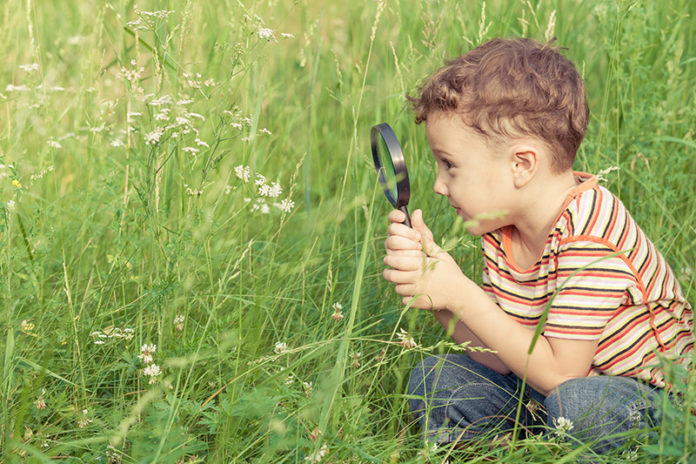In our modern age of smartphones, tablets, and streaming, parents increasingly want their kids to have a well-rounded childhood. When kids are bored, or if the parents need a moment, it’s all too easy to turn on the TV or hand them a tablet. Is this bad habit robbing children of their imagination and creativity? Or even causing health problems?
What is Nature-Deficit Disorder?
Author Richard Louv introduced the term “Nature-Deficit Disorder” in 2005 with the publication of his best-selling book, “Last Child in the Woods: Saving Our Children from Nature-Deficit Disorder.” Let’s dive in and decide if this is a valid concern and what we should do about it.
This term is not to be misconstrued as a legitimate condition or diagnosis, but simply a way we can label and discuss this “technology over nature” phenomenon that appears to be happening in our society.
However, there are some real problems from a lack of outdoor exposure and play for children. I’m talking about attention difficulties, higher rates of emotional illness, child obesity, and vitamin D deficiencies. Also, less tangible effects include lower grades and a lack of respect for the environment.
Who’s to Blame?
The lack of nature in children’s lives today is not all due to technology, but also urbanization. Many people have restricted or limited access to natural areas which makes it difficult to enjoy the outdoors. This is why cities with a strong public park system are so important.
There is also the parental fear part of the equation. Parents worry about their kids getting hurt, a kidnapper or some other malady happening from outdoor playtime. We certainly live in different times where it may be riskier for kids to roam unsupervised, but some of these fears are likely exaggerated and unrealistic.
The 2008 Recreation Participation Report, published by The Outdoor Foundation and partnering organizations, surveyed more than 60,000 Americans covering 114 different outdoor activities. In analyzing the results, they found a decline of more than 11 percent participation in outdoor activities among youth ages 6 to 17, with the sharpest decline in the 6 to 12 age bracket. That’s an additional 11 percent decline in outdoor time in a single year!
A Sign of the Times
Perhaps not as alarming but equally a sign of the times, did you know that the Oxford Junior Dictionary decided to replace a handful of nature-related words like “beaver,” “otter,” and “acorn” with “blog,” “MP3 player” and “broadband”?
How do we know for certain that children are spending less time outdoors? Dr. Rhonda Clements of Manhattanville College in New York State surveyed over 800 mothers in the United States and found: “71 percent of today’s mothers said they recalled playing outdoors every day as children, but only 26 percent of them said their kids play outdoors daily.” These results speak volumes in regard to children’s habits today compared to a generation ago.
A windfall of success in the fight against nature-deficit was the No Child Left Inside Act which was passed by the U.S. House of Representatives in 2015. This bill afforded grants and support for states to include environmental education standards and teacher training.
While this certainly gives the problem validity, however, some argue that it only exacerbates the issue. By institutionalizing outdoor “play” with school structure, it robs the children of the imaginative free play and discovery that childhood arguably should encompass.
What You Can Do
Put down your phone, give your kids your undivided attention. We all know how it feels when someone isn’t fully present during a conversation, now imagine if you’re speaking to your kids this way often unconsciously. Start finding new things that can stimulate you and make you happy besides TV, computers, and phones.
I’ve written about “forest bathing” in the past, which is the act of meditating or taking a very mindful walk through a forest, park, or other natural surroundings. This can greatly benefit your mental and physical health. Did you know that plants emit a substance called phytoncides? These antimicrobial organic compounds provide us health benefits by simply breathing fresh air.
Opt Outside
Do normal routines outdoors, such as eating meals, homework, and board games. More often than not, once kids are outside, they get up and play or be active. Try a picnic lunch or dinner.
Make Time
A lot of parents may feel like they don’t have enough time to play or encourage their kids to be active outside. In this case, encourage play between siblings, neighbors, school friends, or even hire a babysitter if needed. Become friends with another parent and take turns watching the kids at the park or in someone’s yard.
Walk the Dog
If you have a family pet dog, taking them out for walks or to play fetch is always a fun way to get some fresh air together.
Make it Fun!
Outdoor toys can be a big help, such as a water table (or sprinkler or anything that involves water), sandbox, trampolines, bicycles, soccer ball, etc.
Blast From the Past
What did you use to do as a child? Did you build forts, play hide and seek, or kick the can? Introduce these into your own child’s life.
Getting outdoors can boost your immune system by lowering your stress and cortisol. Adults and children alike need to include nature in their health regimen and daily habits.








